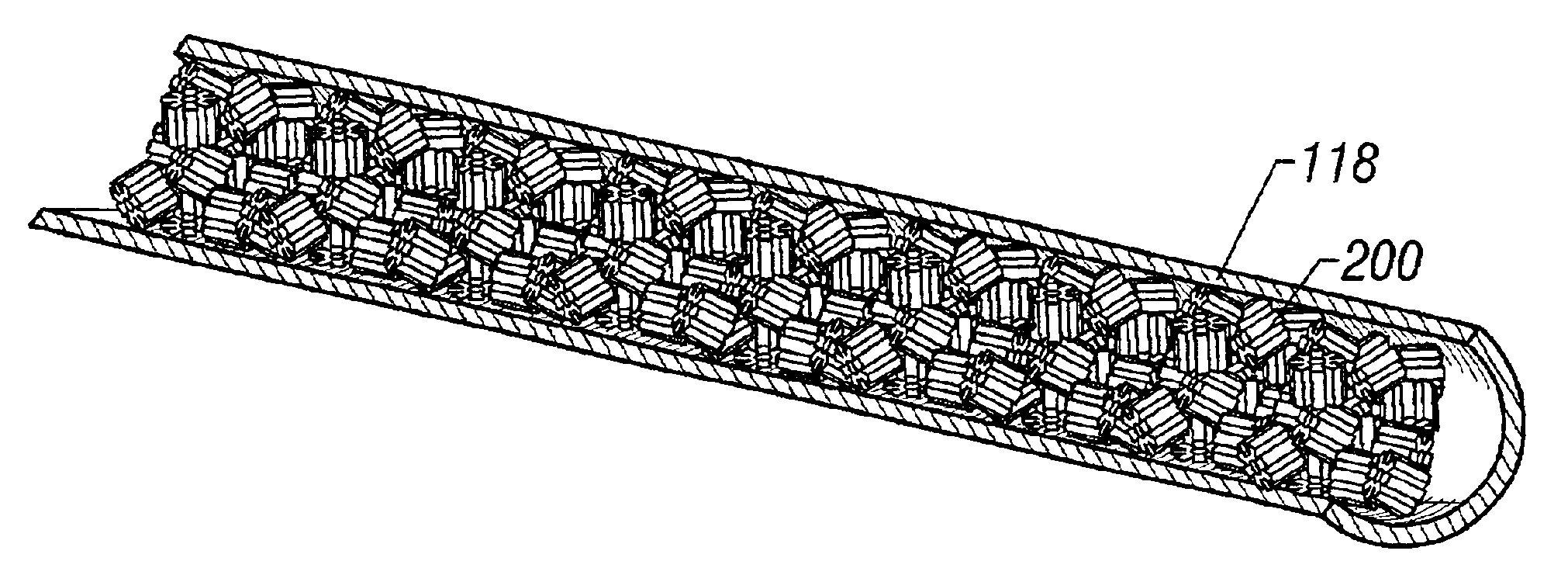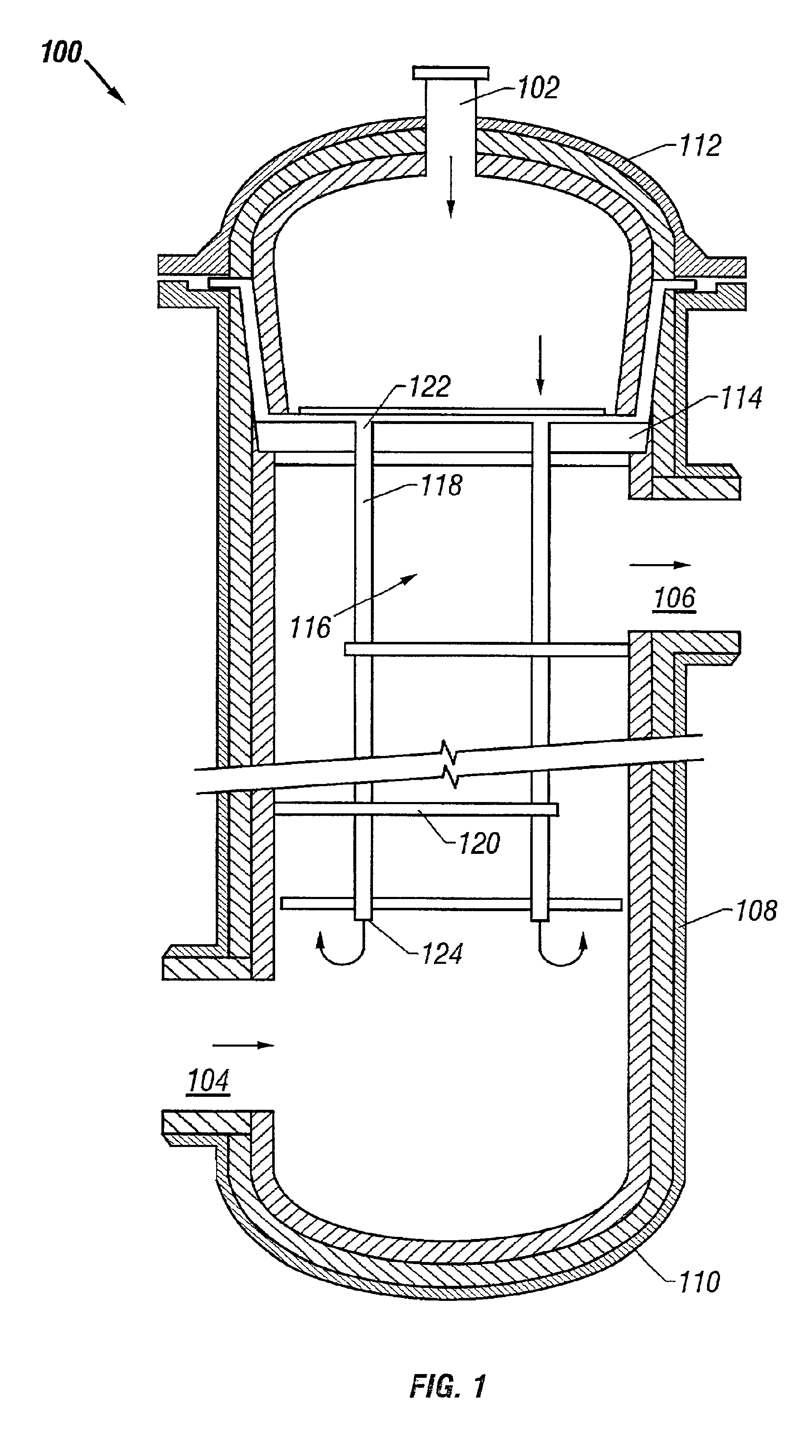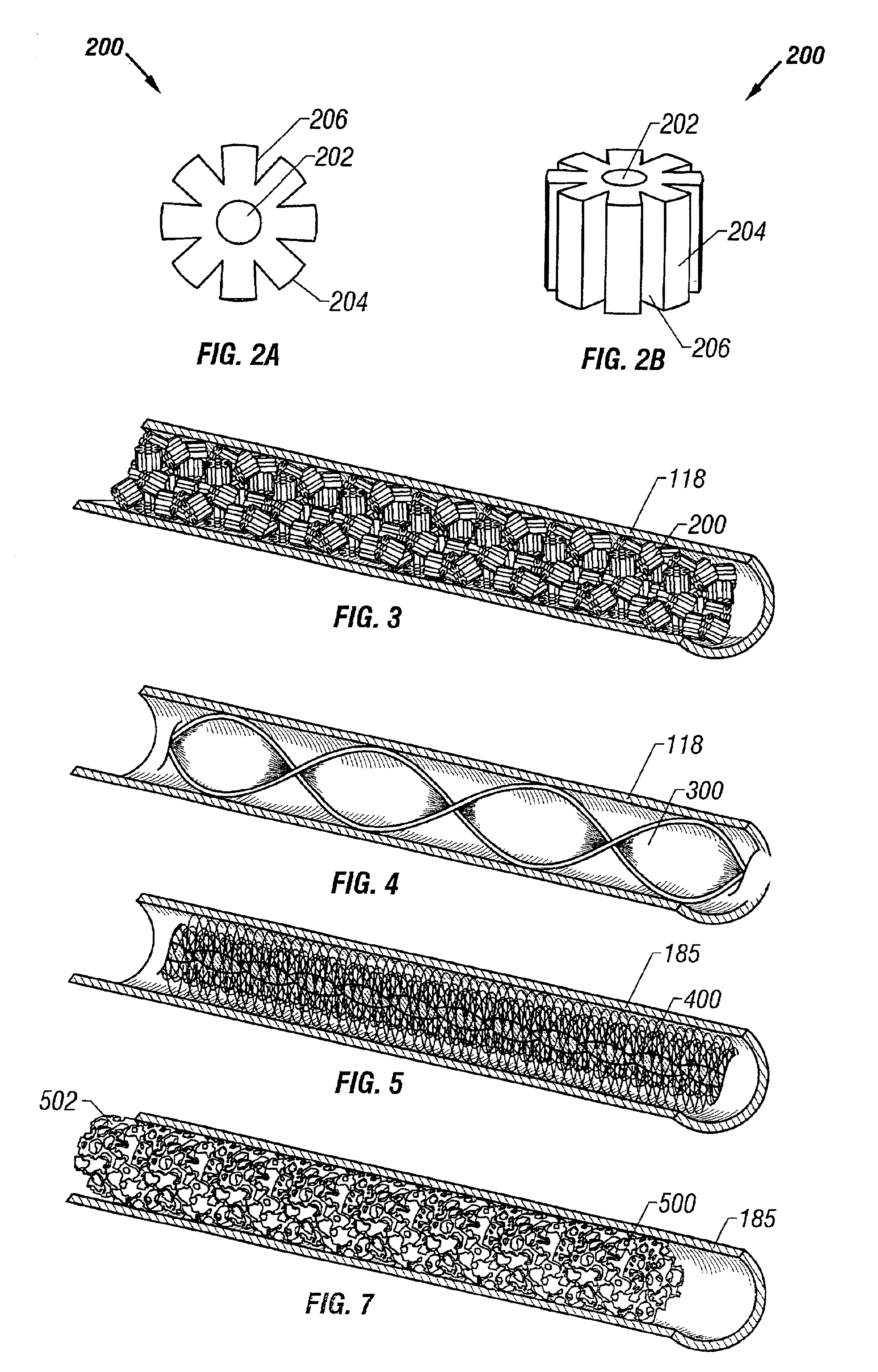Low pressure drop reforming exchanger
- Summary
- Abstract
- Description
- Claims
- Application Information
AI Technical Summary
Benefits of technology
Problems solved by technology
Method used
Image
Examples
examples
[0039]In the following examples, the tube side heat transfer coefficients, flow rates and pressure drops are based on a tube side inlet gas having the composition in Table 1:
TABLE 1ComponentMole PercentN20.23H20.34CH415.49ArCO20.03C2H61.03C3H80.34iC4H100.10iC5H120.02nC60.02CO0.00H2O82.40Total100.00
examples 1-2
[0040]Conceptual sizing reviews were done on various types of catalyst sizes and tube inserts. The catalyst was of a normal size currently used in reforming exchangers available from Kellogg Brown & Root, Inc. under the trade designation KRES (Raschig rings 0.31-in. OD by 0.125-in. ID by 0.31-in. long), a smaller catalyst size (Raschig rings 0.25-in. OD by 0.10-in. ID by 0.25-in. long), a smallest catalyst size (Raschig rings 0.185-in. OD by 0.07-in. ID by 0.185-in. long), a twisted tape insert such as a Turbulator available from Brown Fintube but made of nickel 201 (99.6% nickel), and a ceramic foam insert impregnated with nickel. The results are summarized in Table 2:
TABLE 2BaseComparativeComparativeComparativeParameterCaseExample AExample BExample CExample 1Example 2CatalystNormalSmallerSmallestSolidTwistedCeramic(0.31 ×(0.25 ×(0.185 ×Pelletstapefoam0.125 ×0.10 ×0.07 ×(0.185 ×0.31)0.25)0.185)0.185)Refractory ID1031141101204888(in.)Tube length444427246041(ft)Tube OD (in.)22.51.51....
example 3
[0043]Conceptual sizing reviews were done as in Examples 1-2 to compare the pressure drop and performance of Raschig ring catalyst against ribbed ring catalyst. Both catalyst structures measured 0.31-in. OD by 0.125-in. ID by 0.31-in. long, and the V-shaped grooves between the ribs on the ribbed ring catalyst were 0.17-in. deep. The results are presented in Table 3:
TABLE 3ComparativeParameterExample DExample 3Catalyst0.31 in. × 0.1250.31 in. × 0.125in. × 0.31 in.in. × 0.31 in.Raschig ringsribbed ringsRefractory ID (in.)5555Tube length (ft)2525Tube ID (in.)2.002.00Tube OD (in.)2.252.25Relative no. ofBase1.0tubesRelative catalystBase1.0volumeRelative surfaceBase1.0areaTube ΔP (psi)21.512.5Shell side ΔP (psi)88MTD (° F.)211225Overall U (Btu / hr-5148ft2-° F.)Approach to33.429.1equilibrium (° F.)Methane slip (%)1.191.16
[0044]The data for Example 3 demonstrate that the performance of the ribbed ring catalyst is generally equivalent to Raschig rings of the same size, except that the tube si...
PUM
| Property | Measurement | Unit |
|---|---|---|
| Diameter | aaaaa | aaaaa |
| Diameter | aaaaa | aaaaa |
| Diameter | aaaaa | aaaaa |
Abstract
Description
Claims
Application Information
 Login to View More
Login to View More - R&D
- Intellectual Property
- Life Sciences
- Materials
- Tech Scout
- Unparalleled Data Quality
- Higher Quality Content
- 60% Fewer Hallucinations
Browse by: Latest US Patents, China's latest patents, Technical Efficacy Thesaurus, Application Domain, Technology Topic, Popular Technical Reports.
© 2025 PatSnap. All rights reserved.Legal|Privacy policy|Modern Slavery Act Transparency Statement|Sitemap|About US| Contact US: help@patsnap.com



